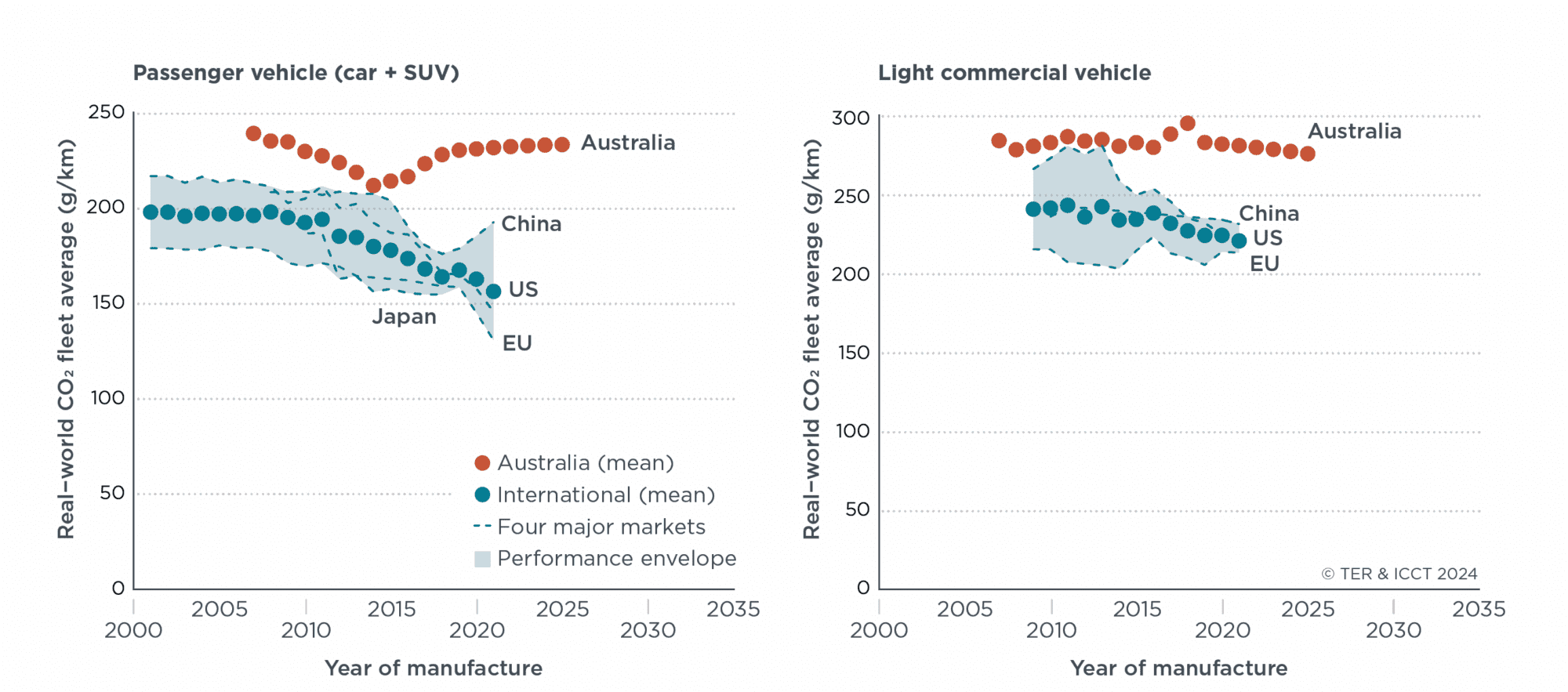Fuel efficiency standards to decarbonize Australia’s light-duty vehicles
Briefing
How Australian light-duty vehicle CO2 emissions compare with the rest of the world
This briefing analyzes the difference in real-world and type approval CO2 emissions between the average fleet emissions from Australia’s light-duty vehicles and those of other major markets, including China, Japan, the EU, and the US.
Our analyses reveal there is a yawning gap between the light-duty fleet’s average emissions in Australia and other major markets, that is putting Australia at a significant disadvantage. Additionally, we found a growing gap over the years between Australia’s type approval emissions reported in the New European Driving Cycle (NEDC) versus the real-world emissions. For instance, CO2 emissions for Australia’s passenger vehicles in 2021 were estimated 48% higher in the real-world and 53% higher for type approval values, compared to the respective average estimates of the major markets. And the gap between Australia’s real-world versus NEDC type approval emissions for passenger vehicles increased from 9% in 2007 to 46% in 2021.

Figure 5. Australian real-world fleet average LDV (exhaust) emissions performance in an international context; the blue polygon shows the combined real-world emissions data from the ICCT for the European Union, the United States, China, and Japan.
Key findings:
- In the absence of binding fuel efficiency or CO2 standards, official CO2 emissions from Australian light-duty vehicles perform poorly when put into an international context, and the available evidence suggests this gap will widen.
- A comparison of fleet-average type-approval CO2 emission values for Australian LDVs with real-world estimates suggests that current Australian test protocols increasingly underestimate on-road emissions.
- The increasing gap between real-world performance and official CO2 emissions values in Australia also contributes to the growing difference in real-world performance between LDVs in Australia and those in major vehicle markets.
Recommendations:
- Australian policymakers should consider implementing ambitious and properly designed fuel efficiency standards to catch up with major international markets and put the country on the pathway to meet its decarbonization targets.
- It is critical that any new Australian standards be carefully designed to effectively reduce not only type-approval CO2 emissions, but also real-world emissions.
